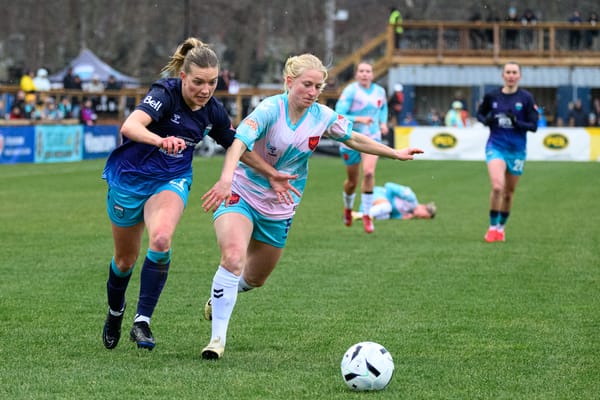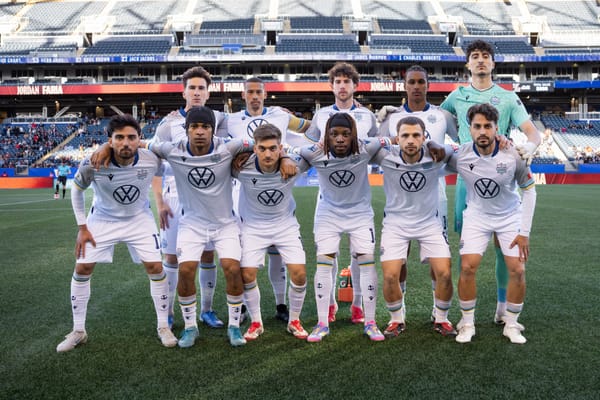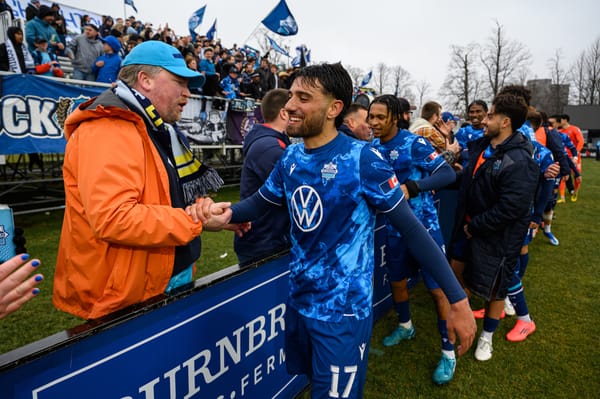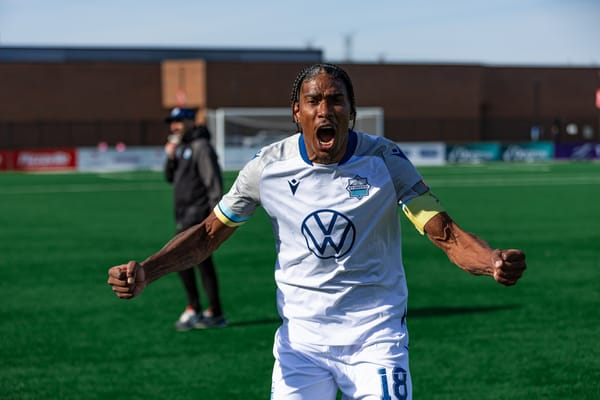Contracts, coaching gigs and Mark Noonan's seal of approval: inside the CPL's salary cap regulations

Editor's Note: Due to the announced salary cap changes on March 13, this piece has been updated to reflect the new regulations.
It's arguably been the most exciting CPL off-season to date.
From marquee player signings, Mbappé-esque transfer drama (thanks Manny Aparicio), heartfelt departures and Champions Cup debuts, the Canadian footy landscape has shimmered with excitement since things wrapped up at Tim Hortons Field in October.
The vibes, as the kids are saying, have been immaculate.
But it's also been an off-season filled with grumblings of cap circumvention, foul play and the type of seedy intrigue one might find in a John le Carré novel. Be it spats on the platform formerly known as Twitter or supporter-led podcasts, everyone is asking — without much direction —about Atlético Ottawa's star-studded recruitment and how it fits into the league's salary cap.
Some supporters, their tongues-firmly-in-cheek, have been as bold to say that the cap is not real.
Although the claim is made in jest, there's no hiding the fact that it is difficult to get detailed information on the salary cap or roster construction. The two documents which govern the CPL's rules and regulations — the Competitions Manual and Operations Manual — are both currently unavailable to the public. Some excerpts, however, are available on the league site.
We're told the league is working to update their site but in the short term, questions remain: how is the cap regulated? Who checks into contracts? Do professional exams or medical bills fall under the player budgets? The Wanderers Notebook has tried to answer some of these questions.
Let's review the basics of the salary cap
The CPL announced an increase to its player salary cap ahead of the 2023 season. Under the regulations put into play last year, the player total compensation budget — which is separate from the technical staff budget — rose from $950,000 to $1,125,000. The cap floor was set at $750,000.
On March 13, the league also announced changes to this year's cap and roster rules, marking the second year in a row the player salary cap has gone up. The league announced that the new cap is set at $1,212,500 — or an 8 per cent increase from the $1,125,000 from 2023— if clubs implement the U-21 player incentive, a program designed to encourage clubs to sign and develop young Canadian footballers.
The league also announced that the player minimum salary remains at $30,000. There is no maximum player salary.
The $1,212,500 player salary cap, should clubs unlock it, encompasses all levels of player compensation ranging from salaries to living expenses to professional examinations. Any form of player compensation that is negotiated in a league contract falls within this budget — technical staff compensation comes from a different pot of monies.
Clubs are also eligible for salary cap relief of up to $100,000 per year for U-21 player salaries; under this category, only half of a U-21 player's salary counts towards the cap. U Sports contracts, designed in conjunction with schools, provide compensation in the form of tuition support. There's no financial information available on the Exceptional Young Talent contracts.
All three developmental contract types — Exceptional Young Talent, U-Sports and development — are considered part of a club's developmental roster, allowing them to carry up to 32 players in total.
Clubs have until April 1 to become cap compliant; the transfer window officially closes on April 24.
Getting contracts approved
Make no mistake: the league has oversight on every single transaction.
Once signed, contracts between players and clubs are sent to the league office for review and approval. One given the green light, clubs are able to schedule announcements. During this process, the league should be informed if players are drawing salaries beyond the pitch; be it in a club office or some other form of employment, the league wants to know.
Depending on the setup, cases will be brought before the league commissioner, Mark Noonan, for consideration. This is always the case for players drawing a second paycheck — be it in a ticketing, sales or some other role — from their club and clubs are expected to submit applications. Nothing moves forward without the commissioner's seal of approval.
Typically, said sources, there are only a small amount of players who are fulfilling extra responsibilities with their club. Former Cavalry captain Mason Trafford is one of the prime examples.
But it isn't just a matter of signing up to help out; the league expects confirmation of duties and hours worked for those cases which are approved by the commissioner.
The trickier situation is when players work for outside organizations not under the CPL umbrella. As mentioned previously, the league's football department expects to be informed of extracurriculars outside of a player's club duties.
Sources said there are some players in the CPL who are working as coaches in their local communities outside of their club duties. It's one way players earn income to supplement their CPL salaries and is viewed no differently than working any other job. Atlético Ottawa keeper Nathan Ingham, who works in the food and beverage industry throughout the season, is one well known example of player balancing a second job alongside his club duties.
Have their been formal complaints?
Atlético Ottawa have signed Ballou Tabla, Kris Twardek, Matteo de Brienne and a half-dozen other high profile players this off-season. Naturally, accusations of cap circumvention have been thrown around. Forge previously enjoyed the honour of being dubbed cheaters by opposing fanbases.
At this time, the league has received no formal complaints against any club.
But there's been plenty of bellyaching, which is to be expected as sporting directors fight for any advantage they can get on the pitch. The true test will be on April 1 as the league office works with every club to ensure they are cap compliant; when asked, sources said they expected all clubs to fall within the salary cap.
Overall, the cap is meant to provide a level playing field as the CPL continues to grow and the league takes regulating it seriously as they try to keep things fair.
And there's no denying each club, be it their ownership or location, has its own unique advantages.
Cover Photo Credit: Canadian Premier League



